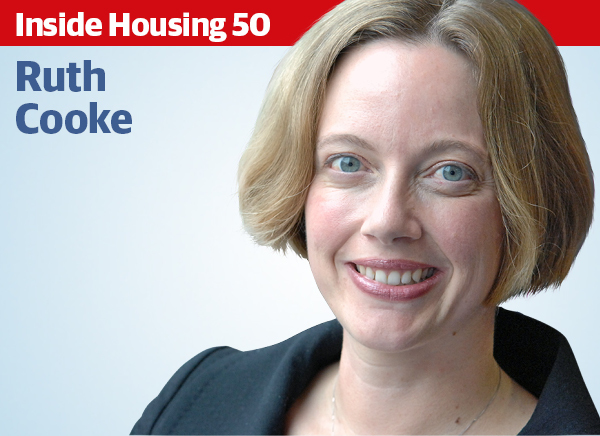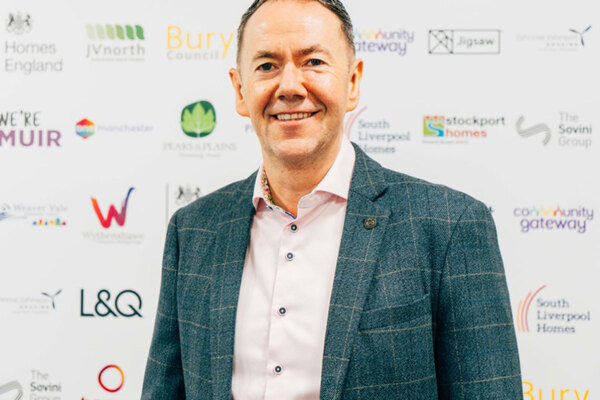You are viewing 1 of your 1 free articles
Staff should be involved in the design of services
Involving staff in service design leads to improved employee engagement and better outcomes for tenants, says Geeta Nanda
Much has been said about the evolving workplace and how we, as employers, should be adapting our practices to this changing world.
Creative industries and tech companies have led the way with exciting new offices and spaces, and flexible working (both when and where) is the norm.
So how can we adapt while still providing engaging work and a service that meets the customer needs?
I remember when I started working in housing how slow communication could be. A typing pool produced our inter-departmental memos, which were then transported (sometimes days later) via orange envelopes to our other office down the road, where a response was typed out before making the return journey in another orange envelope.
Yes, we did have phones, but most formal communications happened through meetings, letters and memos. Work happened from 9am to 5pm with a lunch break held in the canteen and flexi-time squirrelled away for dealing with the need for longer weekends or childcare failures.
However, with processes being few and far between, frontline staff were entrusted with real responsibilities and freedoms to make decisions and act as we saw fit to get the job done.
So surely work is now more engaging with all this technology and good practice being shared through LinkedIn, Twitter and other social media outlets? According to consumer pollsters, only 13% of respondents worldwide feel engaged at work, with the UK faring a bit better at 17%.
“Only 13% of respondents worldwide feel engaged at work.”
While I am sure if the housing industry pooled our results we would get a better outcome than this, we need to recognise that engagement affects our productivity massively. With poor engagement comes higher absenteeism and poor outcomes.
We are often busy looking at our customer feedback, but equally we should be looking at what our employees are saying and how big an impact this can have on who joins your workplace.
Current trends in the workplace show that employees connect more with purpose and values, work better in networks of teams than in hierarchy, and want supportive leadership that helps them experiment and adapt.
A culture of openness, trust and use of talents is more productive than one dominated by direction and rules that limit possibilities.
In the housing sector, we have a massive potential (and therefore an advantage) to be the organisations that people who want purposeful work with good outcomes look to.
So how can we move away from an industry that has been audited to ensure everyone behaves the same and, consequently, focuses on the failure of the few rather than the success of the many?
The answer must lie in changing the way we work and looking to our young leaders, as well as different industries, for inspiration.
One way is by moving towards a focus on service design, to re-engage our staff and set out on the path to becoming a truly creative and innovative sector.
At Thames Valley Housing Association we are embracing service design; this approach is a shift from where change is implemented top down to one where we deal with iterative change.
Where we now spend longer looking at the problem and take time, working with both our residents and staff, to design tailored solutions.
Most of the work is being done by staff on the frontline designing their jobs and systems as part of the process.
“We now spend longer looking at the problem and take time, working with both our residents and staff, to design tailored solutions.”
We know that we won’t get this right first time, every time – we identify the problem, design a prototype solution and then test this, before we make alterations to improve. This is a process that can happen again and again. Being agile means learning from what we do as we go along and designing roles that focus on what the customer needs. We start small and scale this up over time.
It’s early days, but focusing on service design has already proven a great method of encouraging staff across the organisation to develop well-designed solutions over which they have a sense of ownership, as well as creating a forum for new ideas.
If we respect these new methods of working and allow ideas and creativity to be heard, we will be a better industry that will thrive while the world around us pulls in multiple directions.
Focusing on building new homes is incredibly important, but so is the way we engage our staff to become an exciting sector that changes the way we design and deliver our services.
It is only through altering the way we work that we will come up with the ways to solve the housing crisis and capture the creativity of both the young and older staff that we so desperately need.
Geeta Nanda, chief executive, Thames Valley Housing Association










